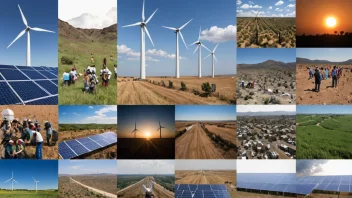Climate change is one of the most pressing issues of our time, affecting not only our weather patterns but also the delicate balance of ecosystems around the world. As temperatures rise, sea levels increase, and weather patterns become more erratic, the consequences for biodiversity and ecological integrity are profound. This article explores how climate change is impacting ecosystems and provides key points that highlight the urgency for action.
1. Habitat Loss
One of the most immediate impacts of climate change is the loss of habitat for many species. As temperatures rise, natural habitats such as forests, wetlands, and coral reefs are being altered or destroyed. Species that depend on specific habitats may find themselves displaced or unable to survive in their changing environments.
2. Altered Species Interactions
Climate change can disrupt the relationships between species that have co-evolved over millennia. For instance, changes in the timing of flowering plants can affect the availability of food for pollinators, leading to mismatches that threaten both plants and their pollinators.
3. Increased Invasive Species
Warmer temperatures and shifting climates can create opportunities for invasive species to thrive in new areas, outcompeting native species for resources. Invasive species can drastically alter ecosystems, leading to declines in native biodiversity and changes in ecosystem functions.
4. Ocean Acidification
The increase in carbon dioxide emissions is not only warming the planet but also leading to ocean acidification. This change in ocean chemistry affects marine life, particularly organisms with calcium carbonate structures, such as coral reefs and shellfish. The degradation of these ecosystems has far-reaching consequences for marine biodiversity and the communities that rely on them.
5. Changes in Migration Patterns
Many species rely on migratory patterns to survive, such as birds migrating south for the winter. Climate change is altering the timing and routes of these migrations, which can lead to mismatches in food availability and breeding success. Some species may struggle to adapt to these changes, leading to population declines.
6. Increased Frequency of Extreme Weather Events
As climate change intensifies, the frequency and severity of extreme weather events, such as hurricanes, floods, and droughts, are on the rise. These events can devastate ecosystems, leading to loss of life, destruction of habitats, and long-term ecological shifts.
7. Threats to Freshwater Resources
Climate change impacts the availability and quality of freshwater resources. Altered precipitation patterns can lead to droughts in some areas while causing flooding in others, threatening both human populations and wildlife that depend on stable freshwater ecosystems for survival.
8. Increased Temperature Stress
Many species have specific temperature ranges in which they can thrive. Rising temperatures can cause stress to organisms, leading to increased mortality rates, reduced reproductive success, and shifts in species distribution. This is particularly concerning for sensitive species, such as amphibians and certain fish.
9. Changes in Ecosystem Services
Ecosystems provide invaluable services, such as clean air, water purification, and pollination. Climate change threatens these services by disrupting the natural processes that sustain them. For instance, the decline of pollinators due to habitat loss can have significant repercussions for food production and biodiversity.
10. Importance of Conservation Efforts
Addressing the impacts of climate change on ecosystems will require concerted conservation efforts. Protecting existing natural habitats, restoring degraded ecosystems, and implementing sustainable land-use practices are essential steps in safeguarding biodiversity and maintaining ecosystem functions.
In summary, the impacts of climate change on ecosystems are complex and far-reaching. From habitat loss and altered species interactions to increased invasive species and extreme weather events, it is clear that urgent action is needed to mitigate these changes. By understanding these key points, we can work towards effective conservation strategies that protect our planet’s ecosystems and the myriad species that inhabit them.






